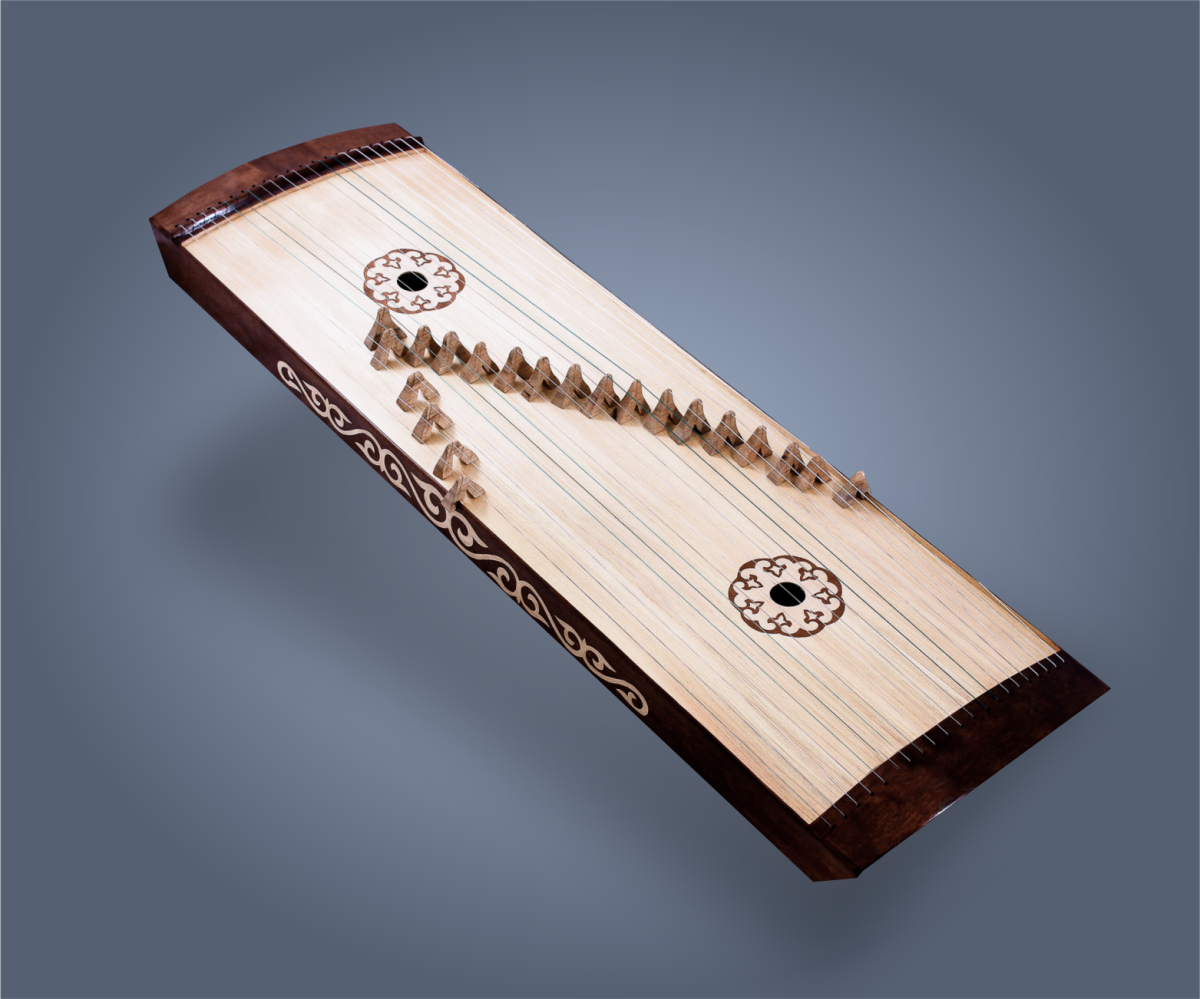ZHETYGEN is an ancient many-stringed plucked musical instrument of the Kazakh people. There are no reliable sources about the history of the instrument, but still the appearance is roughly dated to the V-IV centuries BC, correlated with the formation of the ancient multi-string instruments.
Making the instrument: Peculiar features have pegs and strings of the instrument. In the old days, the instrument was rather primitive, the strings were pulled from horsehair. Now they can be replaced by other materials.
Types of zhetygen strings:
a) horsehair;
b) intestines of the animal;
c) wire;
g) fishing line.
Legend about the zhetygen: In ancient times, an old man lived in one aul. He had seven sons. Once, in the cold winter, people were left without food because of jute (ice and massive cattle mortality), and grief settled in the old man's house. Death one by one claimed all the sons. After the death of the eldest son of Kania, a heartbroken old man hollowed out a piece of withered tree, pulled a string on it and placed a stand under it, performed kui “Karagym” (“My dear”), after the death of his second son Torealym, the old father pulled a second string and improvised kui “Kanat synar” (“Broken Wing ”), he composes to the third son Zhaikeldy kui “Kumarym” (“My Beloved”); to the fourth son Beken kui “Ot soner” (“Extinguished Flame”) was dedicated, to the fifth son Hauas composes “Bakyt koshti” (“Lost Happiness”), the sixth son Zhulzar – “Kun tutyldy” (“Eclipsing Sun”). After the loss of the last youngest son, Kiyas, the old man pulls the seventh string and performs the kui “Zheti Balamnan Aiyrylyp kusa boldym” (“Woe from the loss of seven sons”).
Extracting sounds full of sorrow from the instrument, the performer in images of various character melodies shows the images of his children. These improvised melodies were further developed and came to us in the form of instrumental pieces-kuis under the general name “Zhetygennyn zheteui” (“Seven kuis of zhetygen”).
*Kui – an instrumental music or melody without song, words.

